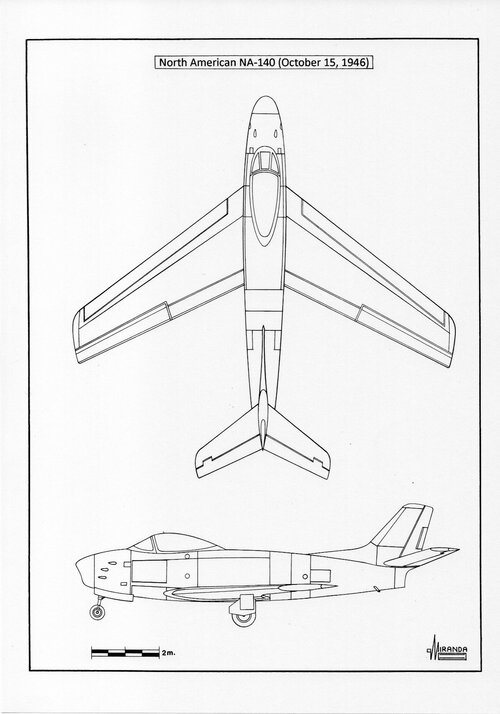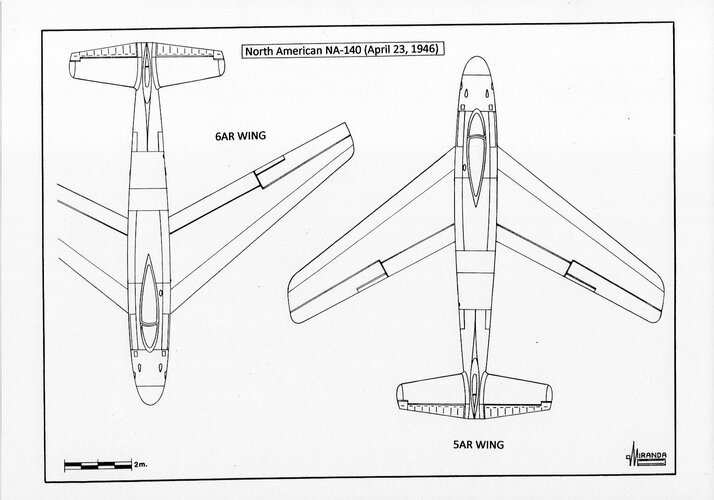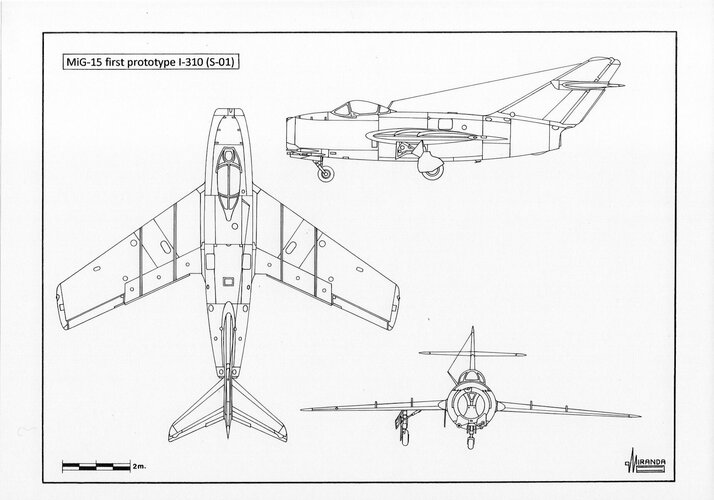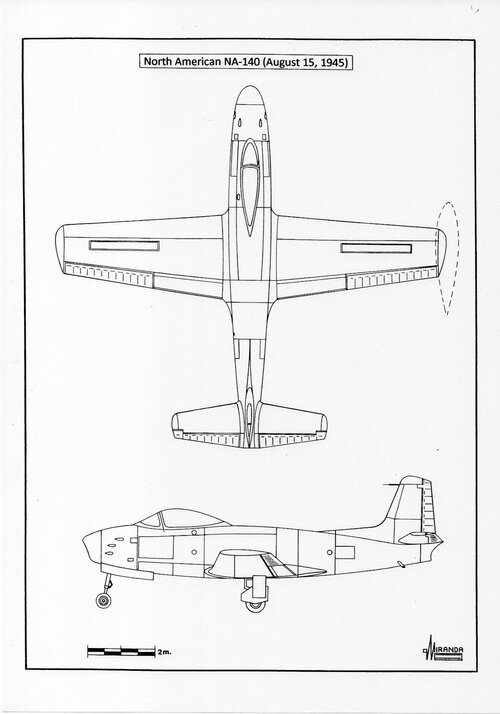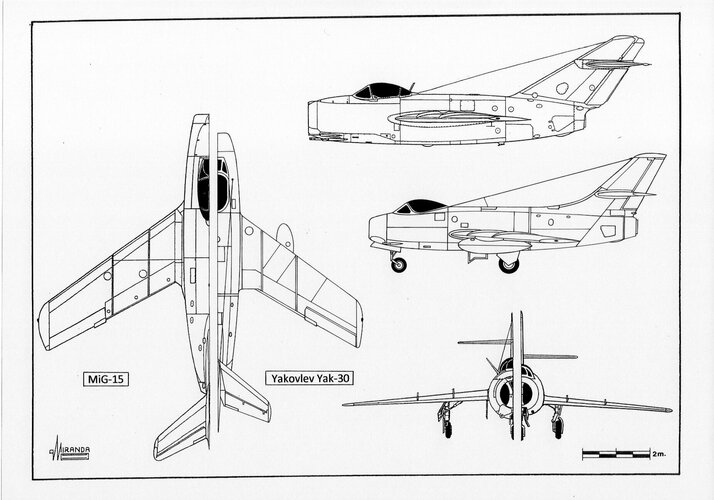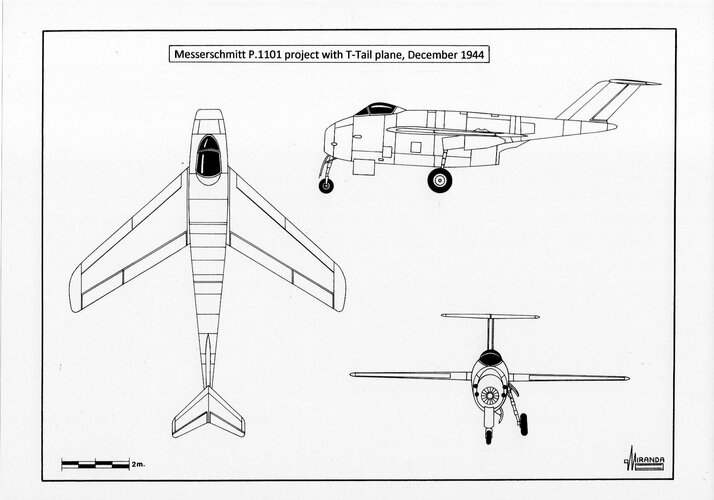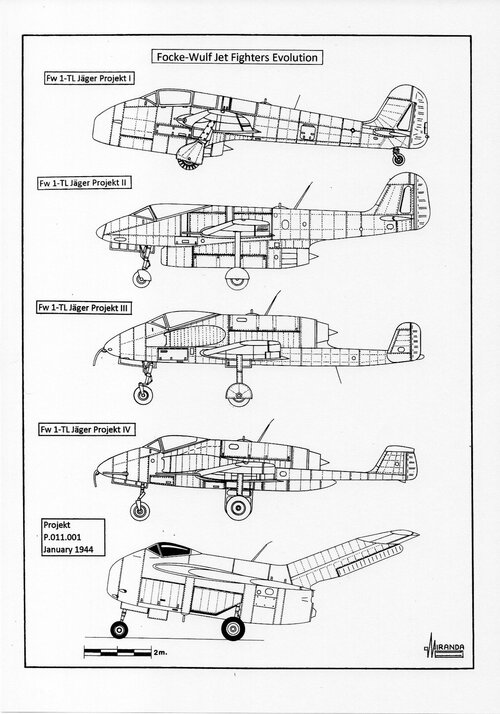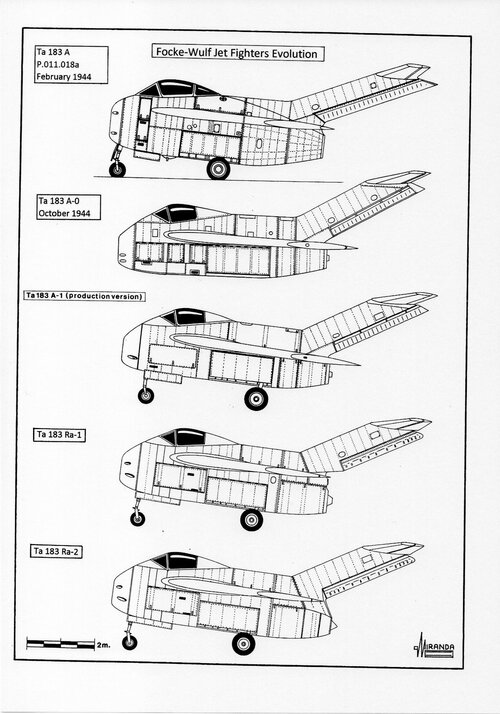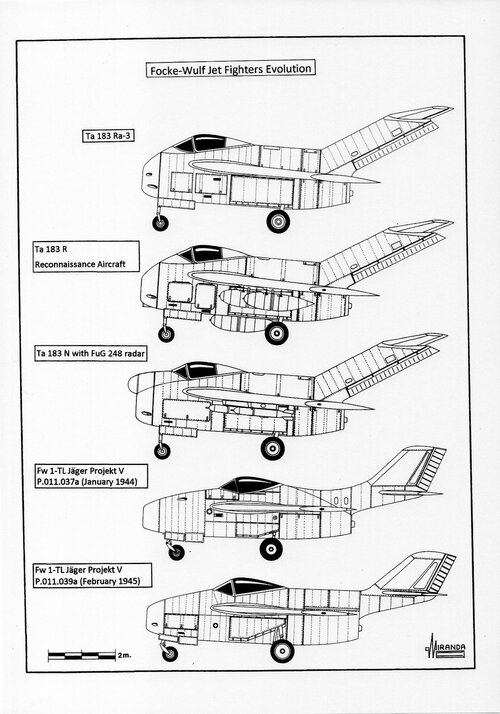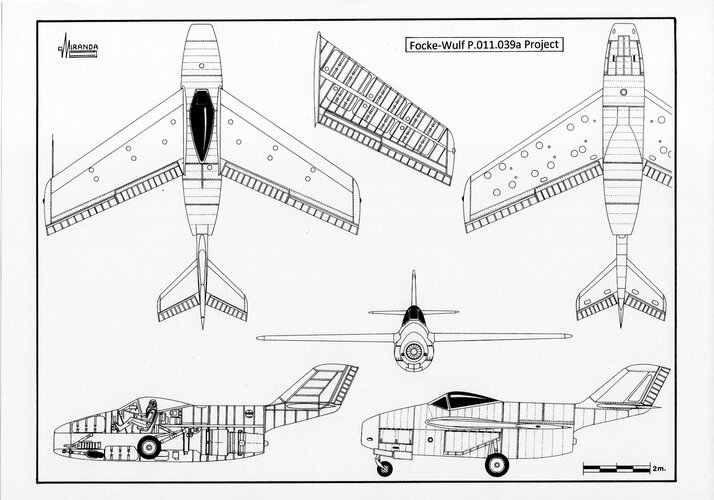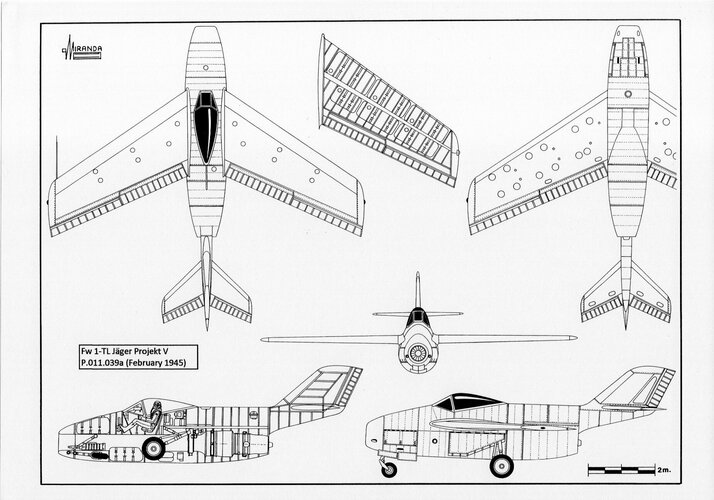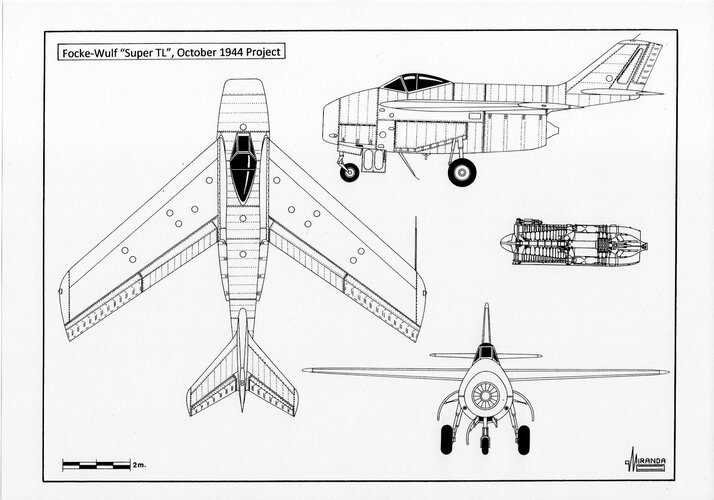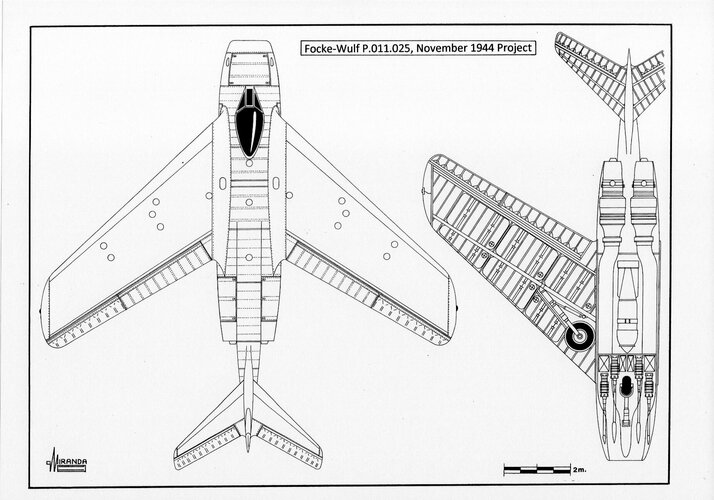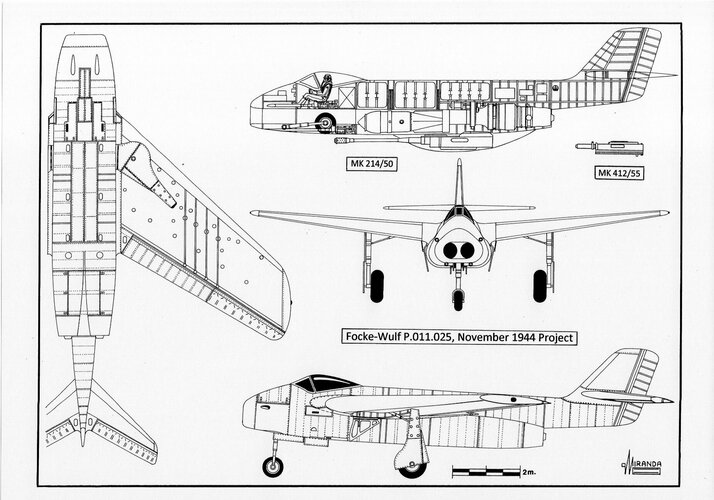Fagot Versus Sabre
The introduction of the MiG-15 Fagot in North Korea on November 1, 1950 was undoubtedly a bad surprise for the Western world.
The Gloster Meteor Mk.8, Lockheed F-80C and Republic F-84 G jet fighters were outclassed by the MiG-15 superior speed, rate of climb and maneuverability at high altitudes. Performances achieved thanks to the weight reduction program of the I-310 added to the excellent high-altitude behavior of its Rolls-Royce Nene Mk.II engine.
Fortunately for the Western world, the North American F-86 A-5 Sabre was sent to Korea entering combat with the Soviet fighter in December 17, 1950.
The MiG-15 could outclimb the F-86A at any altitude, as it had a smaller size and weight, the Nene had better acceleration than the J35, and the NS-37 cannon had an effective range twice than the 12.7 mm M3 machine gun. But the MiG could not benefit from this because of its“Polikarpov heritage snaking” at speeds exceeding Mach 0.86 that affected weapon precision during combat maneuvers.
The Soviet fighter also tended to stall, resulting in unpredictable loss of control at low speeds.
The F-86 had higher roll and turn rates at all speeds and altitudes and could dive at Mach 1 to break the fight against the MiG, whose rather ineffective airbrakes automatically opened at Mach 0.915 to avoid structural damage.
The almost constant narrow chord wings turned out to have extremely poor lift/drag ratio at low speeds and suffered severe flutter at high speeds.
After the accident of the La-160 prototype, the MiG-15 wings were perfected by the scientists of the TsAGI, thanks to the improvements made to the wind tunnel with German equipment, under the leadership of Professor Siegfried Günther.
The solution was reducing wing loading and increasing wing area by 4.7 sq. m resulting in a 27-degrees swept trailing edge.
The use of a wing-retractable main landing gear would allow the construction of a frontal fighter, suitable for rough-field operations. To achieve this, it was necessary to modify the internal structure of the wing to accommodate the landing gear units.
The modification caused insufficient wing torsional stiffness, skin cracks and structural failures at only 70% of the maximum design load.
At the time, the Soviet engineers lacked a practical method of predicting structural strength of swept wings and tried to solve the problem by increasing the structural weight by 20 kg in each wing.
Poor metallurgical skills and extremely inconsistent manufacturing processes created wings with dangerous structural shortcomings.
The Soviet industry was unable to make both wings absolutely identical, due to variations in skin thickness and riveting on the production line. This asymmetry meant that each wing had different lift/drag ratio.
The MiG-15 had a tendency to drop a wing (valyozhka-spontaneous rolling) at Mach 0.88 and it became uncontrollable at 960 km/h.
But the Soviet fighter was designed to knock down B-29s, not to dogfight.
After the Korean armistice on July 27, 1953, the USAF declared the loss in combat of 103 Sabres of the types A, E and F against 757 MiG-15 Soviet fighters.
The secret of the Sabre technological superiority was the German design of its wings, fitted with leading-edge slats that opened automatically at any speed and altitude according to the needs of combat.
On May 18, 1945, the USAAF ordered two prototypes of the NA-140 jet fighter project, under the designation XP-86. The mock-up with straight wings was approved on June 20, 1945.
The North American officials knew that the NA-140 program would be cancelled by the lack of speed, but there were only two possible solutions: reduce drag or use more powerful turbojets. Using the materials available at the time, it is considered physically impossible to reduce wing thickness without dangerously degrading its structural strength. And the new Allison turbojet would take too long to become available.
On April 29, 1945, a company of U.S. infantry occupied the Messerschmitt research center at Oberammergau and capturing the Messerschmitt P.1101 prototype, an experimental fighter with swept-back wings and tail surfaces, designed to fly at 612 mph (985 km/h).
The P.1101 was powered by one Heinkel-Hirth HeS 011 turbojet rated at 2,649 lb (1,200 kg) static thrust only.
Fortunately for North American the German research data on swept-wing flight was available in July 1945.
On September 14, 1945, wind tunnel tests were performed with a 1/23 rd. NA-140 scale model, with 35-degree swept wings.
These trials were extremely promising and the USAAF approved the modification, entitled RD-1369, on November 1, 1945.
On April 23, 1946, North American proposed a new design that could use two new types of swept wings but retained the fuselage and tail surfaces from the previous version.
The 5AR type had 37-degree swept, 5 aspect ratio and 37.07 ft. (11.3 m) wingspan to provide better stability.
The 6AR type had 39-degree swept, 6 aspect ratio and 40.8 ft. (12.44 m) wingspan to provide better range.
At that time there were doubts about the ideal configuration because the wings of the Messerschmitt P.1101 had been built with a variable swept that could be adjusted, in the ground, between 35 and 45 degrees. The prototype had been captured before performing its first flight, which was planned in June 1945.
The data captured from the Germans were only theoretical estimates.
On October 15, 1946, the NA-140 had 36-degree swept wings, 38-degree swept tail plane, 40-degree swept tailfin and circular air intake.
The wings were fitted with automatic slats in the 90 per cent of the leading edge to provide stability at low speeds.
NA-140 (15 October 1946 project) technical data
Wingspan: 11.34 m (37.2 ft.), length: 11.44 m (37.54 ft.), height: 4.4 m (14.49 ft.), estimated max speed: 1,046 km/h, (650 mph), armament: six 0.50 cal. M3 heavy machine guns, engine: one Chevrolet J 35-C-3 axial flow turbojet rated at 4,000 lbs. (1,812 kg) static thrust.
The prototype XP-86, with 35.2-degree swept wings, was rolled out on August 8, 1947, performing its first flight on October 1, 1947.
The wing thickness/chord ratio was optimized at 11 per cent inboard and 10 per cent at the wing tips, the airbrakes were moved to the rear fuselage sides and the canopy width was enlarged 30 cm (11.7 in) to allow the ejection seat operation.
On April 26, 1948, the XP-86 went supersonic, in a shallow dive, powered by one J 47-GE-3 axial flow turbojet rated at 5,200 lb. (2,356 kg) static thrust.
XP-86 (October 1, 1947) technical data
Wingspan: 11.44 m (37.54 ft.), length: 11.31 m (37.12 ft.), height: 4.5 m (14.79 ft.), wing surface: 25.45 sq. m (283 sq. ft.), max speed: 1,020 km/h, (634 mph), max weight: 7,446 kg (16,437 lbs.), ceiling: 13,260 m (43,500 ft.), armament: six 0.50 cal. M3 heavy machine guns, engine: one Chevrolet J 35-C-3 axial flow turbojet rated at 4,000 lbs (1,812 kg) static thrust.

